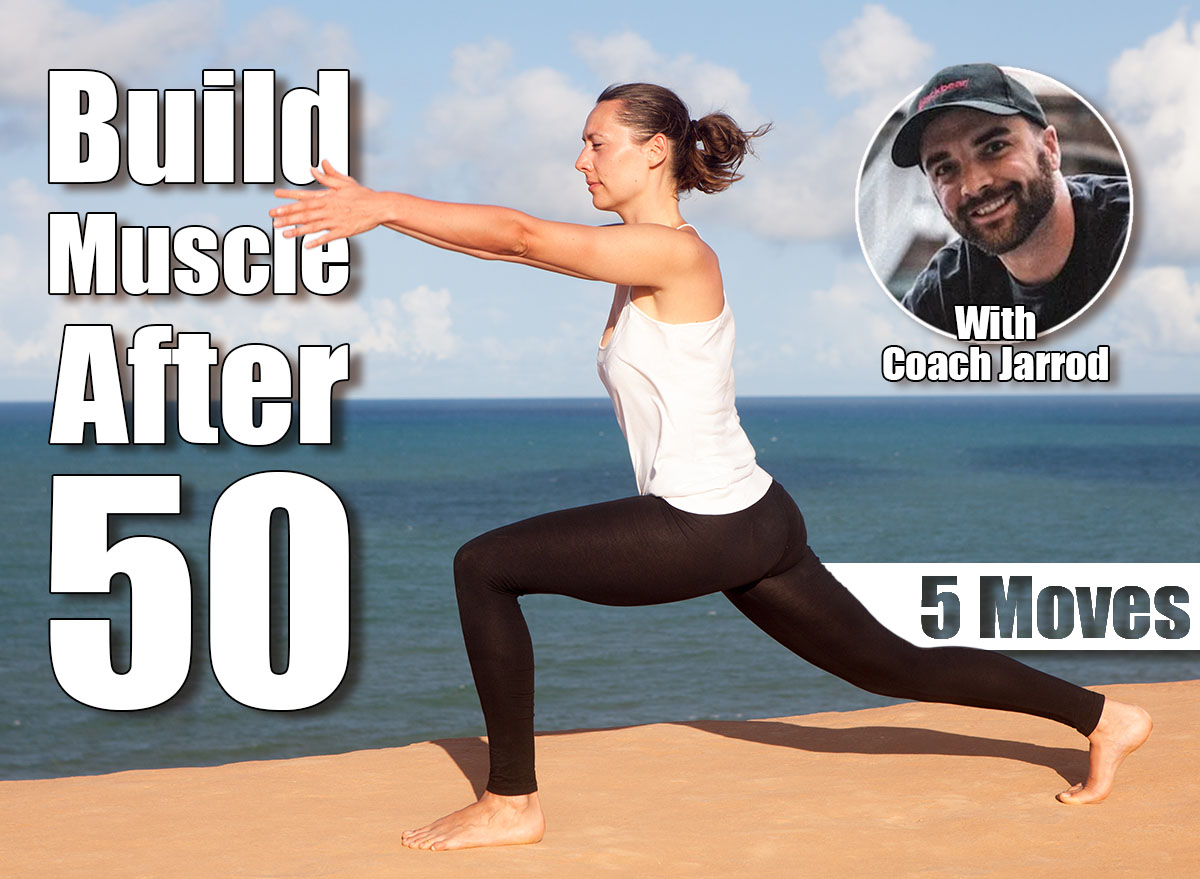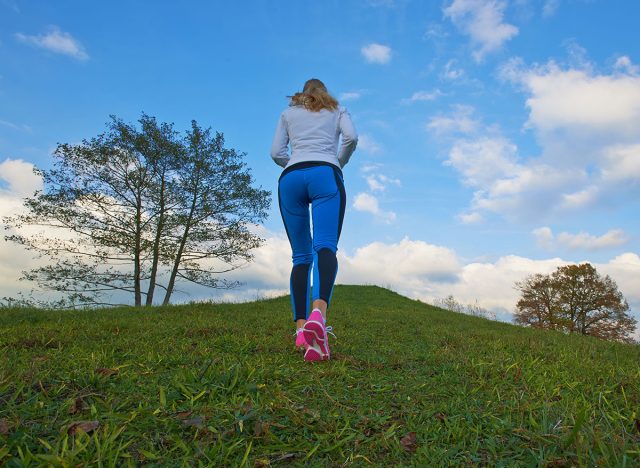5 Daily Standing Moves That Rebuild Lost Muscle After 50

As you age, muscle mass doesn’t disappear overnight, but the slow decline is very real. After 50, your body naturally loses strength and size unless you actively work to maintain it. And if you’re like many others, thinking your workouts need complicated movements as a solution, think again. You don’t need a gym, expensive equipment, or even a mat to fight back. Standing bodyweight movements rebuild lost muscle while keeping your joints happy and your routine simple.
Think about how often you bend, twist, or lunge throughout the day. These everyday motions can either be a source of frustration if you’ve lost strength or a reminder of capability when you stay active. Standing moves mimic the way your body naturally functions, making them more practical for real life than floor-bound crunches or isolation lifts.
The best part is consistency. You can perform these moves daily without overloading your body, and they will challenge the major muscle groups you rely on to stay mobile, strong, and independent. They also work on your balance, posture, and stability—three qualities that are often overlooked but essential for healthy aging.
Here are five standing exercises you can do every day to rebuild muscle after 50: no gear, no floor, just your body and the determination to stay strong.
5 Daily Standing Moves That Rebuild Muscle After 50
Standing Move #1: Squats
Lower-body strength is often the first area people notice slipping after 50. When your legs weaken, simple activities like standing from a chair or climbing stairs feel more taxing. Squats directly train the exact movement pattern you rely on dozens of times a day, helping you reclaim independence and daily confidence. Building strength in your quads, glutes, and hamstrings also protects your knees and hips, which are common trouble spots as you age. Over time, stronger legs improve walking endurance, reduce the risk of falls, and make recreational activities like hiking or playing with grandkids more enjoyable.
Muscles Trained: Quadriceps, glutes, hamstrings, calves, core
How to Do It:
- Stand tall with your feet shoulder-width apart.
- Push your hips back slightly and bend your knees to lower into a squat.
- Lower until your thighs are near parallel to the floor or until you can no longer keep your chest tall.
- Keep your core braced and your weight balanced over your heels.
- Drive through your heels to return to standing tall.
Recommended Sets and Reps: Perform 3 sets of 12 to 15 reps. Rest 45 seconds between sets.
Best Variations: Sit-to-stand squats, slow tempo squats, single-leg sit-to-stands, elevated surface squats.
Form Tip: Avoid letting your knees cave inward—keep them tracking over your toes for proper alignment.
Standing Move #2: Standing Calf Raises
Strong calves do more than just power a walk or run. They act as shock absorbers for your joints, stabilize your ankles, and provide the push-off strength that keeps your stride quick and efficient. As calf strength diminishes with age, balance suffers, and falls become more likely. Regular calf raises help rebuild lost strength and recondition the small stabilizing muscles in the feet and ankles. The stronger your lower legs are, the steadier you’ll feel on uneven ground, whether that’s a cracked sidewalk, a hiking trail, or a slippery driveway in winter.
Muscles Trained: Calves, ankles, intrinsic foot muscles
How to Do It:
- Stand with your feet hip-width apart, using a wall or countertop for light support.
- Lift your heels off the floor, rising onto the balls of your feet.
- Pause for one second at the top.
- Slowly lower your heels back down under control.
- Repeat without bouncing.
Recommended Sets and Reps: Perform 3 sets of 15 to 20 reps. Rest 30 seconds between sets.
Best Variations: Single-leg calf raises, elevated surface calf raises, pulse holds.
Form Tip: Focus on a slow, controlled descent for maximum muscle activation.
Standing Move #3: Standing Side Leg Lifts
Weak hips are a hidden culprit behind back pain, knee aches, and balance struggles in older adults. The glute medius, in particular, plays a critical role in keeping your pelvis level and your body steady during movement. When this muscle is undertrained, your gait can become unstable, and everyday motions like stepping sideways, pivoting, or balancing on one leg feel unsteady. Standing side leg lifts target this neglected area, reinforcing hip stability and maintaining a smooth, pain-free stride. A stronger glute medius also reduces stress on your knees and spine, making this a decisive move for longevity.
Muscles Trained: Glute medius, hips, core
How to Do It:
- Stand tall with your hands lightly resting on a wall or chair for balance.
- Keep your torso upright and lift one leg out to the side.
- Pause briefly at the top of the movement.
- Lower your leg back down slowly.
- Complete all reps on one side, then switch.
Recommended Sets and Reps: Perform 3 sets of 12 to 15 reps per side. Rest 30 seconds between sets.
Best Variations: Resistance band leg lifts, standing abduction pulses, lateral step-outs.
Form Tip: Don’t lean your torso to the side—keep your body upright and steady.
Standing Move #4: Standing Reverse Lunge
Lunges are one of the most effective ways to rebuild strength and coordination after 50. They train your legs individually, which helps correct muscle imbalances and keeps your stride powerful. The reverse variation is easier on the knees than forward lunges while still challenging your balance and stability. This move strengthens your glutes, quads, and hamstrings—the same muscles you use when stepping backward, lowering to the ground, or navigating uneven terrain. Building confidence in the lunge position pays off in everyday activities, from kneeling in the garden to carrying groceries up the stairs.
Muscles Trained: Glutes, quadriceps, hamstrings, calves, core
How to Do It:
- Stand tall with feet hip-width apart.
- Step one foot back and lower your body until both knees are bent at about 90 degrees.
- Keep your front knee stacked over your ankle and chest upright.
- Push through your front heel to return to standing.
- Repeat all reps on one side, then switch.
Recommended Sets and Reps: Perform 3 sets of 8 to 12 reps per leg. Rest 45 seconds between sets.
Best Variations: Stationary split squats, walking lunges, reverse lunge with knee lift.
Form Tip: Focus on controlled steps back to protect your balance and maintain proper alignment.
Standing Move #5: Standing Torso Twists
Core strength after 50 focuses on keeping your spine mobile, your posture tall, and your midsection strong enough to support everything else. Rotational strength is often overlooked, yet it’s essential for movements like turning to grab something in the car, swinging a golf club, or reaching across your body. Standing torso twists target your obliques and deep stabilizers, muscles that keep your spine healthy and responsive. By training controlled rotation, you reduce stiffness, improve coordination, and help prevent back pain that often comes from weak or immobile core muscles.
Muscles Trained: Obliques, abdominals, spine stabilizers
How to Do It:
- Stand tall with feet shoulder-width apart and arms extended in front of you.
- Rotate your torso to the right, keeping your hips stable.
- Return to the center, then rotate to the left.
- Move slowly and with control, avoiding momentum.
- Continue alternating sides for all reps.
Recommended Sets and Reps: Perform 3 sets of 12 to 16 twists per side. Rest 30 seconds between sets.
Best Variations: Hands behind head torso twists, medicine ball twists (if available), slow rotational holds.
Form Tip: Keep your hips steady while rotating through your midsection for proper core engagement.
The Best Way to Use These Moves Daily

These standing exercises are simple, effective, and designed to fit into your everyday routine. You don’t need special equipment or long workouts to see results; what matters most is how consistently you practice them. By focusing on steady progress and execution, you can turn a short daily routine into an effective tool for rebuilding strength and mobility after 50.
- Consistency is key: Perform these 5 moves every day, even if you only have 10 minutes.
- Prioritize form: Focus on smooth, controlled reps rather than rushing.
- Mix with walking: Combine this routine with a brisk daily walk to maximize muscle and cardiovascular health.
- Track your progress: Add reps or slow the tempo once the exercises start to feel easier.
Looking for easy ways to lose fat? Here’s How Long Your Walking Workout Should Be To Shrink Belly Fat.